 W
WAcasis viretata, the yellow-barred brindle, is a moth of the family Geometridae. The species was first described by Jacob Hübner in 1799. It is found from most of Europe to eastern Asia. It is also present in North America.
 W
WAcleris effractana, the hook-winged tortrix moth, is a moth of the family Tortricidae. It was described by Jacob Hübner in 1799. It has a Holarctic distribution. In Europe, it is found from northern Europe to the northern part of central Europe. It is also present in north-western Russia, Japan, Canada and the northwestern United States.
 W
WAcleris roscidana is a species of moth of the family Tortricidae. It is found in France, Germany, Austria, Switzerland, Italy, the Czech Republic, Slovakia, Hungary, Poland, Romania, Norway, Sweden, Finland, the Baltic region, Ukraine and Russia.
 W
WAcleris umbrana is a species of moth of the family Tortricidae. It is found in Great Britain, France, Belgium, Germany, Austria, Switzerland, Italy, the Czech Republic, Slovakia, Poland, Hungary, Norway, Sweden, Finland, the Baltic region and Russia. In the east, the range extends to Japan. The habitat consists of woodland, fens and marshes.
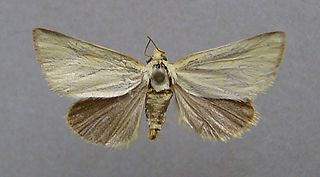 W
WAegle koekeritziana is a moth of the family Noctuidae. It is found on the Russian plain and in Hungary and Moldova. It is also present in Turkey, the Caucasus and Transcaucasia.
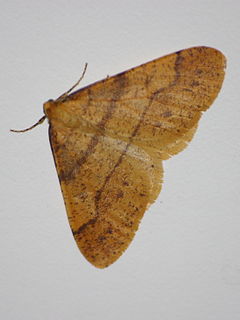 W
WAgriopis aurantiaria, the scarce umber, is a moth of the family Geometridae. It was first described by Jacob Hübner in 1799 and it is found throughout Europe.
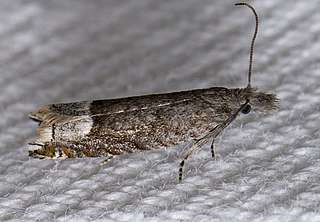 W
WAncylis tineana is a moth of the family Tortricidae. It is found from southern Sweden to Asia Minor and from the Trans-Caucasus to Siberia and the southern part of eastern Russia. It is also present in North America.
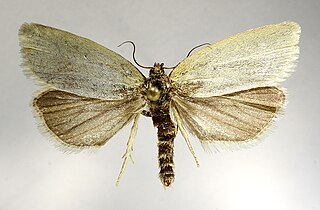 W
WAphelia unitana is a moth of the family Tortricidae. It is found from Ireland and Great Britain, east Fennoscandia and central and south-eastern Europe to Russia and the Near East.
 W
WBactra lancealana is a moth of the family Tortricidae found in Europe. The moth has a wingspan of 11–20 mm. and flies from May to October. Bactra lancealana larvae mainly feed on various rushes, including Juncus and Scirpus.
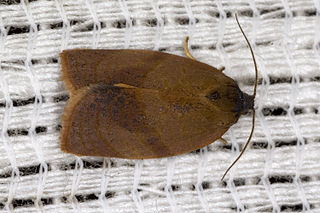 W
WCacoecimorpha is a monotypic moth genus of the family Tortricidae. Cacoecimorpha pronubana—the carnation tortrix—is its sole species and is found in Europe, North Africa, South Africa, Anatolia and North America.
 W
WCharissa mucidaria, the coppery taupe, is a moth of the family Geometridae. It was described by Jacob Hübner in 1799. It is found in southern Europe and North Africa.
 W
WChoreutis nemorana, the fig-tree skeletonizer moth or fig leaf roller, is a species of moth of the family Choreutidae.
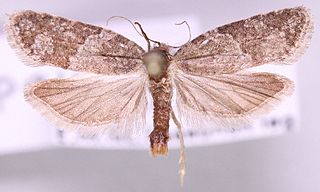 W
WCnephasia pasiuana, the meadow shade, is a moth of the family Tortricidae. It was described by Jacob Hübner in 1799. It is found in almost all of Europe. The habitat consists of rough pastures, fens and marshy areas.
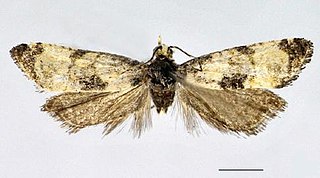 W
WCochylis dubitana, the little conch, is a moth of the family Tortricidae. It is found in China (Heilongjiang) and most of Europe. It is also found in North America, where it has been recorded from Colorado, Maine, Ontario and Washington.
 W
WThe common emerald is a moth of the family Geometridae. The species is found throughout the Nearctic and Palearctic regions and the Near East. It is mostly commonly found in the southern half of the British Isles. It was accidentally introduced into southern British Columbia in 1979.
 W
WCommophila aeneana, the orange conch, is a species of moth of the family Tortricidae. It is found in Great Britain, France, Belgium, Luxembourg, the Netherlands, Germany, Austria, Switzerland, Italy and Romania.
 W
WCrocota tinctaria is a moth of the family Geometridae first described by Jacob Hübner in 1799. It is found in France, Italy, Switzerland and Austria.
 W
WCyclophora puppillaria, or Blair's mocha, is a moth of the family Geometridae. The species was first described by Jacob Hübner in 1799. It can be found in Europe and from North Africa up to the Caucasus area.
 W
WCydia amplana, the rusty oak moth, is a moth of the family Tortricidae. It is found from central and southern Europe to Asia Minor, south-western Russia and Transcaucasus.
 W
WCydia inquinatana is a species of moth of the family Tortricidae. It is found in most of Europe, except Ireland, the Iberian Peninsula and the southern part of the Balkan Peninsula. It has recently turned up in the southeast of Great Britain where it may be breeding.
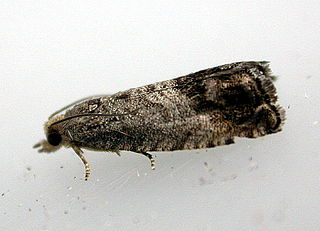 W
WCydia splendana, the chestnut tortrix, is a moth of the family Tortricidae. It is found in Europe. It is also known as the acorn moth, but this can also refer to Blastobasis glandulella from North America, which belongs to the more primitive family Blastobasidae.
 W
WEndothenia gentianaeana is a moth of the family Tortricidae. It is found from most of Europe, east to Korea and the Near East. It is also found in North America and Hawaii.
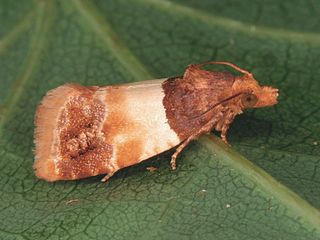 W
WEpinotia festivana is a species of moth of the family Tortricidae. It is found in most of southern Europe and the Near East.
 W
WEpinotia pygmaeana, the pygmy needle tortricid, is a moth of the family Tortricidae. It is found from northern and central Europe to eastern Russia.
Epischnia prodromella is a species of snout moth in the genus Epischnia. It was described by Jacob Hübner in 1799, and is known from North Africa and most of Europe, except Fennoscandia, Ireland, Great Britain and the Baltic region.
 W
WErastria cruentaria, the thin-lined erastria, is a species of geometrid moth in the family Geometridae. It is found in North America.
 W
WEudemis porphyrana is a moth of the family Tortricidae. It is found in most of Europe, east to the eastern part of the Palearctic realm.
 W
WEugnosta lathoniana is a species of moth of the family Tortricidae. It is found in southern Europe, North Africa (Algeria), Asia Minor, Armenia and Iran.
 W
WEupithecia pygmaeata, the marsh pug, is a moth of the family Geometridae. It is known from most of Europe, western and southern Siberia, the Russian Far East, northern Mongolia and North America.
 W
WEupoecilia angustana is a moth of the family Tortricidae. It is found in most of Europe to the southern part of the Urals, China, Japan and Korea.
 W
WGypsonoma minutana, the poplar tortricid, is a moth of the family Tortricidae. It is found in Europe and North Africa, Turkey, Transcaucasia, Ural, Kazakhstan, from central Asia to Siberia and eastern Russia, Asia Minor, Iran, Afghanistan, Mongolia, China and Japan.
 W
WIdaea contiguaria, the Weaver's wave, is a moth of the family Geometridae. It was first described by Jacob Hübner in 1799 and is found in Europe.
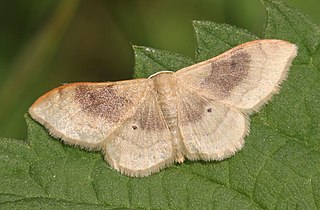 W
WIdaea degeneraria, the Portland ribbon wave, is a moth of the family Geometridae. The species was first described by Jacob Hübner in 1799.
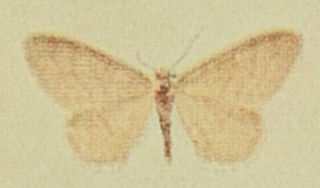 W
WIdaea dilutaria, also called the silky wave, is a moth of the family Geometridae. It is found in Europe.
 W
WIdaea sylvestraria, the dotted border wave, is a moth of the family Geometridae. The species was first described by Jacob Hübner in 1799. It is found in Europe.
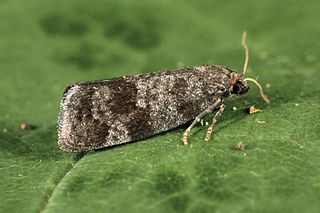 W
WNeosphaleroptera is a genus of moths belonging to the subfamily Tortricinae of the family Tortricidae. It contains only one species, Neosphaleroptera nubilana, which is found in almost all of Europe and the Near East.
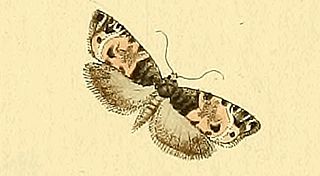 W
WNotocelia incarnatana, the chalk rose bell, is a species of moth of the family Tortricidae. It is found in China, Mongolia, Japan, Russia, Kazakhstan and Europe, where it has been recorded from most of the continent, except parts of the Balkan Peninsula.
 W
WNycteola degenerana, the sallow nycteoline, is a moth of the family Nolidae. The species was first described by Jacob Hübner in 1799. It is found in Europe, from southern Fennoscandia to Spain, Italy and the Balkans. Outside of Europe it is found in China, Japan, the Korean Peninsula, the Russian Far East, southern Siberia, Turkey and the Ural.
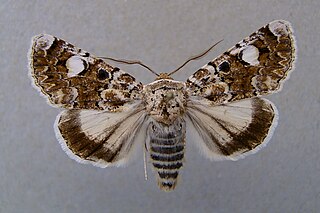 W
WOxytripia orbiculosa is a moth of the family Noctuidae. It is found in most of the Palearctic realm.
 W
WPachycnemia hippocastanaria, the horse chestnut moth, is a moth of the family Geometridae. It is found in most of Europe.
 W
WParasa lepida, the nettle caterpillar or blue-striped nettle grub, is a moth of the family Limacodidae that was described by Pieter Cramer in 1799. It is a native minor pest found in the Indo-Malayan region, including India, Sri Lanka, Vietnam, Malaysia and Indonesia. It is an introduced pest to urban trees in western Japan.
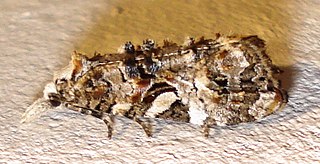 W
WPhtheochroa rugosana is a small moth of the family Tortricidae.
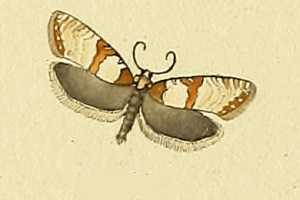 W
WProchlidonia amiantana is a species of moth of the family Tortricidae. It is found in France, Germany, Italy, Austria, the Czech Republic, Slovakia, Poland, Croatia, Slovenia, Albania, Hungary, Romania, the Republic of Macedonia and Greece.
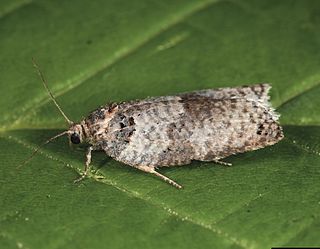 W
WPseudeulia is a genus of moths belonging to the subfamily Tortricinae of the family Tortricidae. It contains only one species, Pseudeulia asinana, which is found in Italy, Slovenia, Austria, the Czech Republic, Slovakia, Hungary, Romania, Bulgaria, North Macedonia and Ukraine.
 W
WScopula imitaria, the small blood-vein, is a moth of the family Geometridae. It was first described by Jacob Hübner in 1799 and it is found throughout Europe and in North Africa.
 W
WScopula nemoraria is a moth of the family Geometridae. It is found from central to eastern Europe, east to Russia and China.
 W
WSyndemis musculana is a moth of the family Tortricidae. It is found in Europe, China, the Korean Peninsula, Japan, Russia (Amur) and North America.
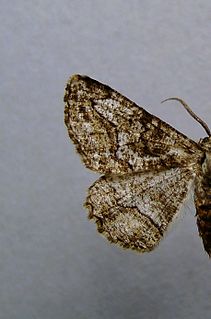 W
WSynopsia sociaria is a moth of the family Geometridae. It is found from the southern part of central Europe to western Central Asia. In the north, the range extends from the North Sea coast to the Baltic region and Russia. In the Caucasus, subspecies S. sociaria unitaria is found.
 W
WThiodia citrana, the lemon bell, is a species of moth of the family Tortricidae. It is found in China, Japan, Iran, Asia Minor, Turkmenistan, Russia, Kazakhstan, North Africa and Europe. The habitat consists of rough grasslands and dry pastures.
 W
WThe Zeiraphera griseana, the larch tortrix, is a moth of the family Tortricidae.